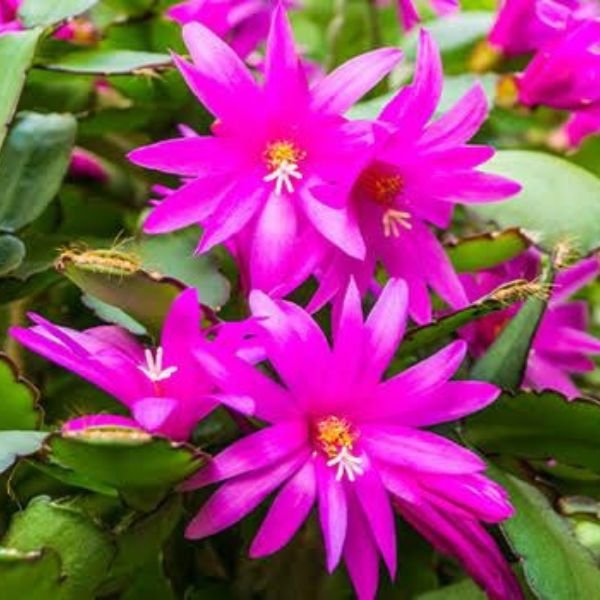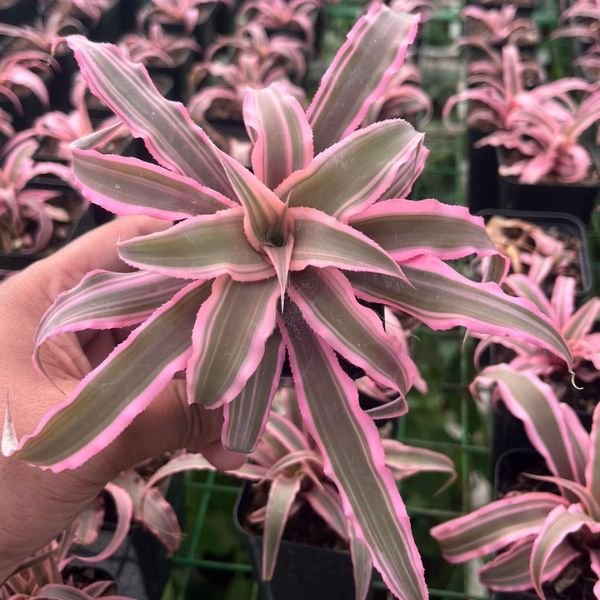Historical and cultural significance of cactus in indigenous communities
The Cactus is a renowned member of the Cactaceae family and is native to America. Cacti are suggested as spiny plants but have different sorts of significance in different native, Mexican, and Israeli cultures. They are most common in tropical, desert, and rainforest areas and The Aztecs were among the first people to recognize the value of cacti. No doubt! These amazing plants reflect the symbolism of strength and protection and somehow on the other warmth and glamor.
Most of the cacti are succulent but also the non-succulent cacti are present. With several 2,500-3,000 species as of now, they have been admired for centuries due to having beneficial qualities. Indigenous communities have traditionally used their fruits in various recipes.
How cactus has been used for food, medicine, and other purposes
Cactus have various purposes including food, medicine, and other purposes. They have been utilized for various reasons throughout history. This succulent is also used as a nutritious and antiviral item in the dish to cure diseases. The food items of cacti are filled with antioxidants, fibers, and other nutrients. In ancient times, most medicines were produced from cactus fruits and flowers, especially for diseases.
Cactus can cure problems of blood glucose, cholesterol to other slight problems. The prickly pear cactus can be served raw in delicious dishes. Aside from the fruit, the leaves of the cactus are also edible as a salad or cooked as a vegetable.
Types of cacti available for online purchase in India
Cacti can stand in a high-heat and dry environment with the help of stems and spines. The name \”Cactus\” arrives from the Greek name \”Kaktos\”, earlier this name had been given to a spiny plant. As time revolves, they assemble wide popularity and fame for the hidden qualities under their spiny skin.
Cactus also produce tubular-shaped multi-colored flowers from the areoles. The shape and size of the cacti are from small, medium to tall, columnar, and large based on the species. Instead of leaves, these plants produce sharp spines from the areoles to make themselves from outward attack.
Mammillaria
The name of this large cactus genus comes from the Latin word \”mammilla\” which means the nipple. The areoles at the top and bottom part of the small tubercles make the cactus exceptional from the rest of the cactus. Its shape often ranges from round to cylindrical.
Mammillaria has a clump-like small and rounded body with a different divided head. Funnel-shaped flowers with different colors like yellow or pink give an exotic touch to the spiny body. This cactus also bears small and edible fruits of different coloring.
A fantastic variety of Mammillaria plants are available in Plantzone: The snowy Mammillaria Albilanata. Then the delightful Mammillaria Bocasana and Mammillaria Bombycina display lovely shaded flowers. Mammillaria Eriacantha, Mammillaria prolifera, and Mammillaria pringlei, have the majestic presence of yellow spines. Mammillaria Elongata, and Mammillaria Prolifera Black Cactus, meet the Mammillaria vetula to survive together in arid landscapes. These fascinating Mammillaria plants are here to impress you with their simple yet captivating beauty.
Moon cactus
Moon cactus has another specific name Gymnocalycium mihanovichii. The bright coloring mutants which lack chlorophyll are its distinct feature. To look at the moon cactus with sharp eyes, you will find that several ribs cross throughout the greyish-green body.
They are native to South America. Not only the mutant, but this miracle cactus also provides cone-like yellow or green flowers and fruits. With bright colors like red, yellow, and orange mutants show off their glory instead of having some thorns at the bottom. Orange Moon Cactus and Red Moon Cactus are the two gorgeous flowering cactus species, available now for purchase.
Bunny Ear Cactus
Opuntia cactus, commonly known as the Bunny Ear Cactus, is a distinctive cactus species that possesses a fluffy, oval shape. Its unique appearance is accentuated by the presence of white glochids that cover its entire body, resembling a pattern of polka dots. Due to its aesthetic appearance, it is named Polka Dot Cactus.
The Bunny Ear Cactus is native to Mexico and prefers dry and harsh climate conditions to grow in. It is a low-maintenance plant, specifically suited for arid areas and enduring periods of drought. Red Ear Bunny Cactus, White Ear Bunny Cactus, and Yellow Ear Bunny Cactus are special varieties with attractive looks.
Brain Cactus
Brain Cactus, scientifically known as Mammillaria elongata ‘Cristata’ features a brain-like appearance. This plant unfolds a greyish-green body adorned with spines. The spines themselves are of the same or brown color as the body resulting in a dark grey-green shade.
During the spring months, it makes charming flowers for the brain structure. While the spines may initially give off a somewhat fussy look but its prickly small brain-like appearance has made the Brain Cactus popular as a house plants. For small spaces, Brain Cactus and Thai Brain Cactus are the only options you need.
Other cactus varieties
Plantzone has an exclusive range of cacti on offer. Special cacti include the Noto white cactus, Echenopsis, Indiana Head Cactus, Boxer cactus Gymno calcium, and Gymnocalycium Baldianum all thriving in the desert environment with ease. The Yellow flowering Astrophytum Grafted Cactus, Bishop\’s Cap, blooms with bright yellow flowers. Lastly, Euphorbia Lactea White Ghost Cactus with a white appearance and the Fairy Castle variegated cactus, which combines yellow and green colors, together create a amazing scene. Hamatocactus Setispinus, Huernia Macrocarpa, Zebrina Variegata cacti bring beauty to the desert environment.
How to choose the right cactus for you
Size and shape: Before purchasing the cactus, choose the particular cactus which fits in your available space. Some can grow up to several feet tall and columnar and others remain small and compact later on. Enough space to grow cactus and place its developed size left you with no regrets.
Style and aesthetics: A diverse range of cacti describe different light or dark colors and some produce flowers and fruits and have mutants. Select your favorite cactus as per your preferred colors
Matching requirements: Every cactus has specific requirements for light, water, and soil. Do some research earlier to ensure know the needs of your chosen cactus. The cactus, matching up the light, temperature, and schedule is the best pick out.
Spines: Some cacti are known for their sharp spines, which can be dangerous for pets and children. If you have small children or pets, consider a cactus with soft or no spines. Otherwise, you can keep your cactus out of reach of pets and children.
Cactus care and maintenance
Caring for and maintaining a cactus is the attention-paying factor to gaining successful plant cultivation. Proper care and maintenance include aspects such as temperature, lighting, humidity, and fertilization to boost the health of a cactus.
Understanding light and temperature requirements
The lighting differs a lot with the changing of the cactus species. So, the lighting range can be shifting from direct or indirect to full sun. For indoor placing of cacti, the south-facing windowsill is the best place to get the maximum amount of lighting. In case of a lack of lighting, you can give 10-15 hours of artificial light to fulfill its requirement.
Cacti are famous for their desert-dwelling characters as they are tolerant of scorching heat like deserts. Recommend an average temperature between 22°C to 35°C at daytime and 15°C to 20°C at night for all types of cacti. Several cacti are cold tolerant, so they can survive in low temperatures.
Potting and repotting tips
For potting, first, choose the size of appropriate container size to put your cactus in. The succulents prefer to select a container with proper drainage, as cacti thrive in the well-drained area. To facilitate healthy growth, fill the container with cactus-mix soil, enriched with a mix of organic material, and position the cactus in the center of the pot. Remove the gaps between the cactus soil and the plant.
Conduct repotting every 2-4 years. Before transferring the plant to its new container, make protection from the cactus\’ spines by wrapping something around the plant. Repot the cactus with a new container and medium as the same potting method for a smooth repotting process.
Watering and fertilizing guidelines
Cacti don\’t need much water but one thing is to remember that they need water to grow. Water once in one or two weeks to make visible the healthy growth of the cacti. Another way to know the perfect time to water is to check the potting soil. When it becomes dry, it needs to be watered.
Cacti are not frequent fertilizer feeders. But fertilization benefits the plant\’s health. You can fertilize 2-3 times in the growing season of spring and summer. Fertilizing once a year is enough to gather its requirements.
Care and maintenance of cactus after purchase
Give proper light requirements: Pick a good place where light can become the best friend of your cactus. Proper lighting in the first stage is very beneficial to grow to its best.
Maintain a watering and fertilizing schedule: Cacti are not fond of over-watering and fertilizing. So, making a schedule for watering and fertilization according to the season works well in the initial maintenance phase of cacti.
Monitoring other requirements: Use the cactus mix for potting, and checking the humidity and air circulation around the cactus are necessary to grow them. Don\’t forget to check for pests and fungus diseases which can be caused by to lack/overdose of the appropriate requirements.
Proper care for different types of cactus
Various types of cacti are available in the market now and what\’s the best part? Some cacti like Opuntia and Echinocereus are cold-tolerant and can withstand moderate heat. Other cacti are as usual heat lovers, have a close look at temperature range. You can pick out the cactus from the large species, similar to your environment. The potting, watering, fertilization, and repotting are more or less the same for different types of cacti.
Best cactus varieties for indoor environment
Many people want to plant cacti as a houseplant. Planting cacti indoors is not tough as the cactus is a low-maintenance plant. Christmas, bishop\’s cap, and bunny ear cacti are the most famous indoor cacti. These cacti look very attractive when the flowers appear on their body.
Creative and unique ways to display cactus in home decor
- As a Potted Plant: The most common idea is to put the cactus as a potted plant near the window. Keeping the cactus near the south-facing window is the best as it requires light to grow.
- Basket plant: Plant the cactus as a basket plant in the lighted area of your home. Make sure the basket has a good drainage system to pass out the excess water.
- Staged Garden: You can order a stage-like designed container. It can be used as a staged garden to put together tiny cacti of the same requirements.
- Table Tops/Living Art: Place the tiny cactus on the top of the table, also consider some tiny cacti in a clustered way. Show the cacti art in small pieces of the container giving a classy look.
Cactus gift ideas
The gift of a cactus can build a feeling of protection for the receiver. You can gift a Christmas or Moon cactus with a decorated gift box. To minimalist-appreciating people, a small basket of cacti adorned with colorful pebbles does wonders to impress them. Many people already possess and a cactus growing kit could be a valuable resource to gift them.
An extraordinary option is to present a small cactus in a cup or as a tabletop decoration with a heart-touching note is a fitting gesture for any occasion. Beyond the plant itself, cactus-inspired wall art, jewelry, mattresses, and other goods can also make for excellent gifts.







